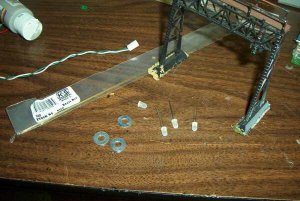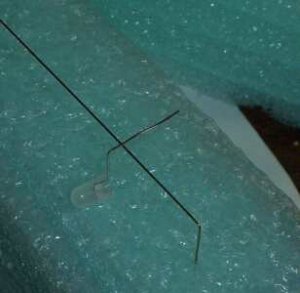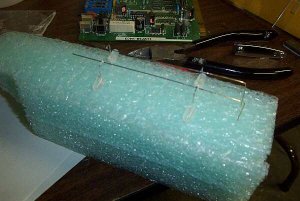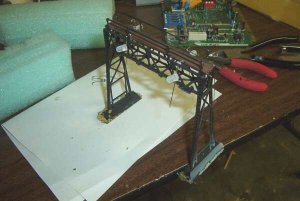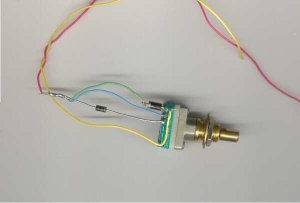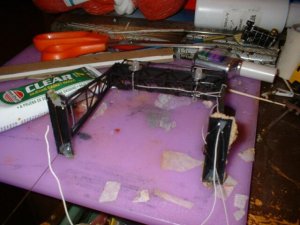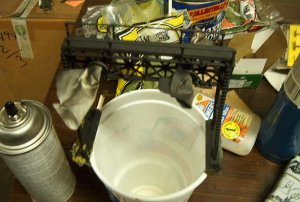F
Fred_M
A simple to build and operate signal bridge can be made from a common HO signal bridge and a tri-colored LED. The LEDs we want are bipolar (two wire) red/green, yellow on AC type. I purchase them from www.allelectronics.com along with two 3 pole rotary switch, four 1N4001 diodes, and two 220 ohm ¼ watt limit resistors. I also use a 8 volt AC wall pack transformer (wall wart). Also needed are 4 #6 flat washers, .020 K&S brass rod, a soda straw, some fine stranded wire, and paint. We will need for tools a soldering iron with flux and solder, some CA gel, a 1/16 drill bit, clear silicon RTV, cutters, and needle nose pliers. Below is a list of electronic parts from one source. Feel free to get them from anywhere you want.
LEDs: http://www.allelectronics.com/cgi-bin/category.cgi?category=340080&item=LED-6&type=store
Wall Wart: http://www.allelectronics.com/matrix/AC_Wall_Transformers.html
Switch, rotary: http://www.allelectronics.com/cgi-bin/category.cgi?category=700425&item=RS-95&type=store
Diodes: http://www.allelectronics.com/cgi-bin/category.cgi?category=205100&item=1N4001&type=store
Resistors: http://www.allelectronics.com/matrix/One_Quarter_W_Resistors.html
LEDs: http://www.allelectronics.com/cgi-bin/category.cgi?category=340080&item=LED-6&type=store
Wall Wart: http://www.allelectronics.com/matrix/AC_Wall_Transformers.html
Switch, rotary: http://www.allelectronics.com/cgi-bin/category.cgi?category=700425&item=RS-95&type=store
Diodes: http://www.allelectronics.com/cgi-bin/category.cgi?category=205100&item=1N4001&type=store
Resistors: http://www.allelectronics.com/matrix/One_Quarter_W_Resistors.html


